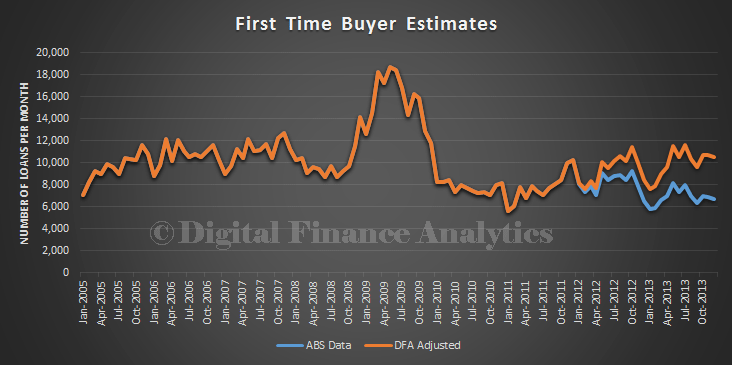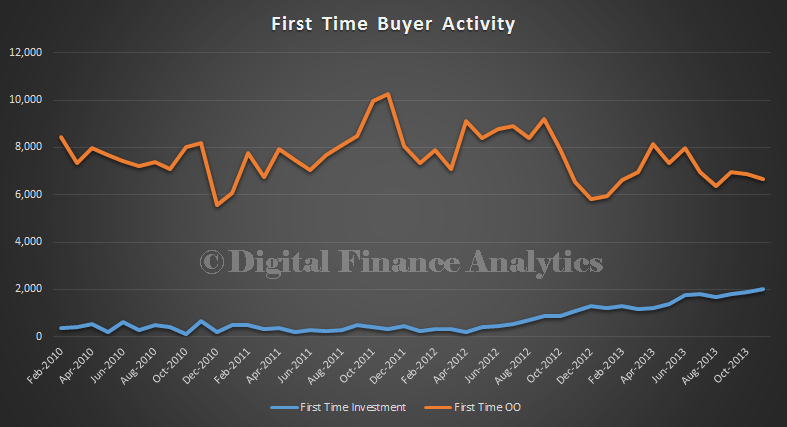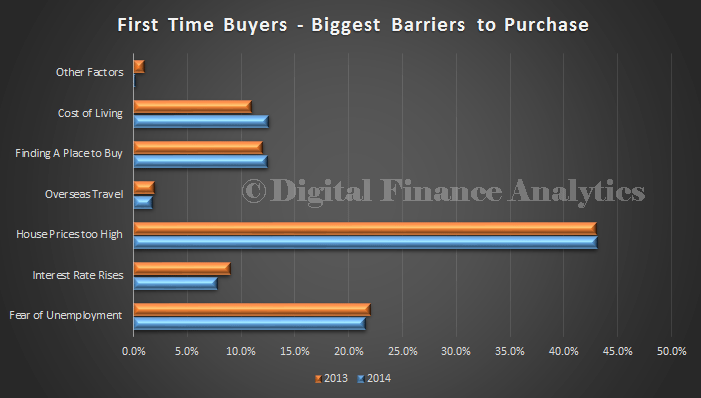Cross-posted from DFA Blog.
First Time Buyers appear to be sitting on the sidelines of the property market. The latest ABS data reports this, but is the data correct? Today we look at the latest findings from our households surveys, and also the data collection processes which are used to feed the ABS data. In doing so, we can make an assessment of whether we have the full story.
In our latest households survey, we updated first time buyer preferences. We see that high prices remain the most significant barrier to purchase. You can read more in our updated report, published this week – The Property Imperative – Volume II.

We also have a data reconciliation problem between our survey and the ABS data, as we think first time buyers are more active, especially those purchasing an existing property. It varies by state, but could be as much as 20% above the official numbers. This is more than a survey sample error, and is getting bigger.
In addition, we also recently highlighted that some first time buyers were being smart and leaping directly into the investment market:
“Units, are more likely to be purchased as an investment, not for the purposes of moving into later, but as a long term investment.”
We estimate that these first time buyers account for perhaps another 20% of activity, which is not separately identified in the statistics.

If the true picture was around 40% above the reported data in December, then first time buyers would be more active, and the long term down trend less pronounced. This is my best estimate, using the ABS data as a baseline, and adding in results from the DFA surveys. It shows first time owner occupied and investment loans combined.

But is this feasible? To answer this, we need to look at the data collection processes for both owner occupied and investment data.
According to the ABS, data is collected from the banks for owner occupied loans using the APRA form ARF 392. Looking at the form, and the instructions, each bank is asked to report:
“Part C requests the value of total new housing commitments broken down by the type of loan that has been arranged, with a further split of these items into First Home Buyer loans and others. A First Home Buyer is a borrower entering the home ownership market for the first time.”
So the banks must determine which loans are first time buyer loans. How do they do this? Well, having make a few calls it seems that it varies. Some have a tick-box on the application form, others use the first owner grant as the proxy for being a first time buyer.
However, most states now have now switched first owner grants to buyers of new properties. In NSW, for example, before concessions for first homeowner grants on existing homes were scrapped last year, 16,474 grants were written, worth $82.37 million. By contrast, after the change, first homeowner approvals in November were down more than 67%, even accounting for foreign buyers who can also apply!
It looks like the reporting could be off somewhat, if first time owner occupier buyers of existing properties are not being correctly identified in the returns by some of the banks.
On the investment loan side, the ABS uses data from the APRA form ARF 391. There is no requirement for banks to split out first time buyers in the investment category.
So, I conclude that currently, we cannot rely on the data to provide an accurate picture of the status of first time buyers. Our own research suggests that there are more buying than the data might suggest.
I would like APRA to tighten its instructions to ensure that banks provide a full picture, and ask for a split in the investment category also. Then if ABS updates their reporting, we will know. Until then, take the statistics with a healthy pinch of salt!
That said, my estimate shows that the initial research is correct, many first time buyers are being excluded by current prices. Its just not quite so bad…

